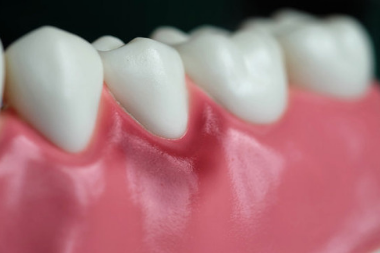
The inflammation of the gum line due to bacterial growth in the mouth is referred to as gum disease. The condition is one of the most common oral health issues in the United States. It is often present in the top five when it comes to diseases that cause tooth loss. As per the data available with the Centers for Disease Control and Prevention, as well as the American Dental Association, more than 42 per cent of adults above the age of 30 suffer from gum disease.
Stages of Gum Diseases
There are three stages of this condition. The first stage is gingivitis. It further progresses into periodontitis if left untreated. The third and most severe phase is advanced periodontitis.
The condition often goes unnoticed, as some patients do not experience any pain during the initial stages. Unfortunately, people approach their dentist for treatment only after they start experiencing chronic gum pain. If ignored, advanced periodontitis has the potential to cause gum tissue or bone loss in the mouth.
Gingivitis is the minimally invasive stage as the gum inflammation and pain can be controlled by acting against the plaque formation along the gumline. In most cases, professional cleaning at the dental office, along with a strict brushing and flossing routine, can help in reversing the condition.
Patients suffering from periodontitis need to undergo cleaning, scaling, or even a minor surgical procedure. It is necessary for the removal of plaque and germs accumulated beneath the gum line. In this phase, a gap may develop between the gum and tooth. Bacteria and food particles get collected in this pocket, resulting in an infection. The dentist may need to surgically remove these pockets as the plaque can multiply and spread below the gumline.
Remember, simple brushing and flossing cannot prove to be helpful in advanced stages as the plaque hardens and turns into tartar. It can only be removed at the clinic by a dental hygienist.
Signs that indicate gum disease
- The gums appear swollen, turn red or start bleeding after brushing, flossing.
- Teeth may appear loose with visible pus around them.
- The patient may experience pain while chewing.
- Sensitivity to both hot and cold stuff, as well as bad breath, are other common symptoms besides pain.
Causes of gum disease in adults
- Failure in following a proper tooth brushing habit is what starts it all. The formation of plaque, consisting of bacteria, mucus, and other particles, worsen the condition and trigger gum disease.
- Women experience hormonal changes during monthly menstruation, menopause, and pregnancy. The gums remain more sensitive to gingivitis during this period.
- Patients suffering from AIDS, cancers, as well as diabetes, also face a higher risk of developing gum disease due to weak immune system.
- Some medicines trigger abnormal gum tissue growth and reduce the flow of saliva. These drugs can harm teeth as well as gums and may cause gum disease.
- Individuals who fail to follow proper oral hygiene habits and have a family history for gum disease are more prone to this medical condition. Such patients should not skip their dental checkups and professional cleaning sessions at the dental office.
- Teeth grinding can be a trigger factor for gum disease. Grinding and clenching can put pressure on the tissues around the teeth and destroys them. Thus, patients suffering from teeth grinding should not ignore the condition and use mouth guard, muscle relaxants as per recommended by the dentist.
Treatment options for Gum Diseases
The treatment method for this condition depends on the stage that the disease has reached. However, the aim is always to stop the disease progression, infection by cleaning plaque, removing pockets, and reducing swelling.
Non-surgical or medicine-based therapies can control bacteria growth and promote the reattachment of healthy gums with teeth.
Stress impacts the body’s immune system and indirectly reduces the body’s infection-fighting capacity. So, managing stress also remains crucial, along with gum disease treatment.
Maintaining a well-balanced diet consisting of Vitamin C, E remains crucial for the patient while under treatment to control tissue damage. Thus, the dentist may suggest lifestyle changes, especially eating and drinking habits, while under treatment.
Plaque control can help in reversing gingivitis and controlling gum disease. Opting for a professional cleaning twice a year and following a proper brushing, flossing routine can help. Brushing thoroughly removes plaque while flossing ensures no food particles remain trapped between the teeth. Plus, rinsing the mouth with an antibacterial mouthwash can ensure harmful bacteria stay in control.
Controlling the urge to smoke remains crucial
Individuals habited to smoking cigarettes, or chewing tobacco products are several times more prone to gum diseases compared to non-smokers. Smokers need to control their urge for smoking as it can slow down the effects of treatment. Smoking makes the tissue repair process harder.
Just noticed a red sore gum around one tooth or are worried about the causes of painful teeth and gums? You should consider making an appointment at Roswell (GA) based TruCare Dentistry.
